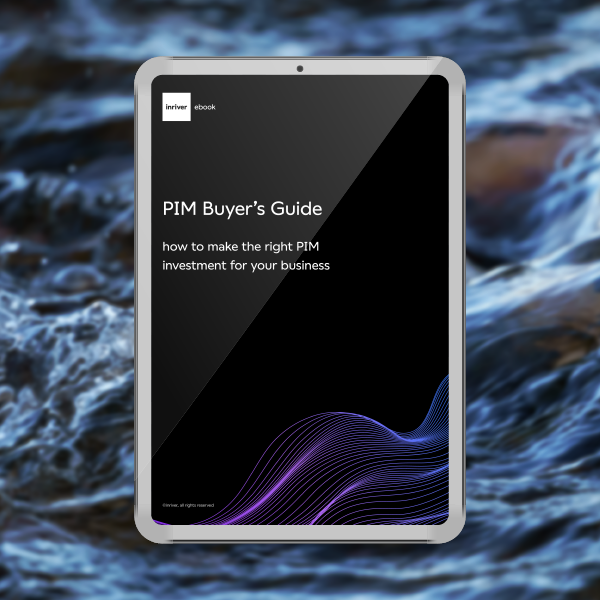What’s the difference between a product release and a product launch?
July 28, 2021Discover the difference between these two key parts of the product journey, and how PIM software can help with both.
Learn more about the difference and how to make the marketplace impact you’re hoping for.
Your product development teams have worked countless hours, scrutinized hundreds of figures, and crafted numerous prototypes. The moment is finally here: the product has been released. Your hard work has paid off. You’re finished.
Or are you? What about launching the product?
Whether you’re talking about a product for your e-commerce channels or a software product, both need a launch. So, what’s the difference between a product launch vs release? In this article, we’ll use a software product as an example of how your product rollout plan should look and how it fits into your larger product management strategy.
- Product release versus product launch: An overview
- When does a release become a launch?
- Product release checklist: Roles & Tasks
- Product launch: What you need for success
- Product launch checklist: Roles & Tasks
- Plan your product release for a successful product launch
Product release versus product launch: An overview
Some companies mistakenly equate production readiness with launch readiness. However, while a sound product strategy covers both elements, there are striking differences between a product release vs product launch:
Product release: Your product is technically complete and ready to hit the market, bringing new functionality to partners and customers. For product development teams (such as engineers, UX specialists, and product managers), this is the heart-in-mouth moment when you finally get to see your product shine on digital and physical shelves.
Product launch: Your organization introduces a new product to the market, focusing on product marketing and generating buzz. What does “launch” mean? Think of your launch plan as a fanfare – your new product’s moment in the spotlight. A launch requires strategic product marketing, focusing on informing the media and public about the product’s new features. Yes, it depends on the product being ready for release, but it’s also when other core business operations get involved, particularly sales, marketing, and legal teams. While a product release is a step forward, product marketing efforts to launch a product ensure it captures market interest.
When does a release become a launch?
Understanding the distinction between a product release and a product launch is essential, but knowing when a release becomes a launch is equally crucial. Consider the following key factors when transitioning from a release to a launch:
- Market Readiness: A product release indicates technical completion and readiness for the market or usage by partners and customers.
- Core Business Operations: A launch incorporates product marketing strategies involving sales, media, marketing, and legal teams to promote your product.
- Communication and Visibility: A strategic launch plan ensures your product receives the attention it deserves, capturing the interest of your target audience. An effective launch increases visibility through various media channels, engaging the market with your brand.
- Cross-Team Collaboration: Successful transitions from release to launch require close collaboration between product development, marketing, sales, and customer support teams.
- Launch Goals and Strategy: A launch sets specific goals to maximize customer adoption, accelerate revenue growth, introduce new features, and deliver an exceptional customer experience.
- Continuous Improvement: Evaluating the impact of the release and gathering feedback helps refine future releases and improve the overall product lifecycle.
By recognizing these factors and planning accordingly, you can ensure a successful product introduction that resonates with customers and achieves your desired marketplace impact. Effective cross-team collaboration, strategic communication, and a focus on specific goals are the pillars of a well-executed launch.
Product release checklist: Roles & Tasks
Typically, the Product Manager is responsible for the entire product release. They’ve mapped out the requirements, agreed on the Epics, and often identified the BETA test customers. Just as each of the teams involved in the product development has its own checklist, the final checklist for release rightfully belongs to the Product Manager.
Here are some of the activities that fall under a typical product release:
- Define features and document requirements: Ensure clear documentation for the engineering team.
- UI/UX design: Provide designers with specifications, UX research, and wireframes.
- Engineering: Build the fundamental capabilities to bring the product to life.
- QA and operations: Test the new product in a real-world environment. Fix any issues. Rinse and repeat until the product is ready to roll out!
- Internal training: Train internal teams on product usage, support, and troubleshooting to prepare for the release.
Once you have a live, stable, and relatively bug-free product, it’s time to execute your actual product launch based on the strategic planning started earlier in the product launch process.
Product launch: What you need for success
Now it’s time to launch. You worked hard to perfect your product release. Partners and customers are going to love it. (And if they don’t, you’re about to find out.)
“According to Harvard Business School professor Clayton Christensen, there are over 30,000 new products introduced every year, and 95 percent fail.”
– Inc.com
How can you make sure that your product will be one of those 5% that succeeds? It boils down to closing the release-launch gap. To ensure a quick, seamless transition from product release to product launch, involving development and product marketing teams is key to success. Think product development, marketing, and sales. And don’t forget your customer support organization! Working together, you have a far better chance for a successful product launch, especially when you’ve crafted a launch plan with the end goal and launch date in mind. Teams that do effective planning are more likely to meet their go-live date, accelerate adoption, and deliver an exceptional customer experience.
To create an effective launch plan, make sure it includes:
- A description of the features that will enhance functionality and improve customer experience
- Planned deliverables (and due dates) from sales, marketing, and other teams
- Outline of dependencies between phases (product releases and launch) and groups (particularly product development, customer support, sales, and marketing)
- Milestones and associated dates that influence the actual launch. Remember to add your Issue and Risk logs to monitor dependencies or hidden surprises

Product launch checklist: Roles & Tasks
If you want your product launch to make the impact you’re hoping for, make sure you spend time clarifying and reviewing the following key deliverables:
- Product documentation: Complete your documentation for the launch so your partners and customers can get familiar with what’s new and review relevant product information.
- Legal considerations: Make sure your legal team creates an appropriate legal agreement, where needed, that outlines your promises and liabilities to the partners and customers.
- Product release training: Train your sales reps, customer support teams, and partner network on the product’s key features and benefits.
- Assess the launch delivery plan: Review your product delivery methods. How do your customers want to buy products like yours? Is your partner network fully up to speed? Are you engaging your target market effectively? Do you have a plan for tracking and reviewing success metrics?
- Plan feedback collection: Decide what methods, types of feedback, and channels you’ll use.
- Set up pricing strategy: Agree on the product pricing structure in advance. Include pricing in your sales and partner enablement training.
- Marketing: Plan your promotion strategies for existing customers and prospects! Decide on your communication channels, create new marketing content, and add relevant articles to your knowledge base to get the word out.
After you launch, you also need to follow up on your release. Consider how this product release stacks up against existing releases and how it impacted your bottom line, marketing strategy, customers, teams, and organization. This will help you refine future product releases, including tracking new features to gain insights into customer usage.
Plan your product release for a successful product launch
There are many stages to a successful product launch, with team involvement across your company. While a product release is a critical milestone, a release without a strategic launch won’t resonate with your customers. Your successful product launch requires meticulous planning, cross-team collaboration and communication, and a coordinated delivery plan.
For an e-commerce look at product release and launch, find out how a product lifecycle management (PLM) solution and a Product Information Management (PIM) solution are complementary when it comes to launching products for your omnichannel landscape. The inriver PIM solution helps syndicate product information, making things simple regarding launch time.
want to see the inriver PIM in action?
Schedule a personalized, guided demo with an inriver expert today to see how the inriver PIM can get more value from your product information.
you may also like…
frequently asked questions
how do product releases impact ongoing product development?
Product releases are a critical milestone in the overall development process. They signal the completion of the technical work needed to bring a product or new feature to market. However, releasing a product doesn’t end the cycle—it provides valuable feedback that can guide future changes and improvements. This iterative process ensures that the product continues to align with customer needs and industry best practices.
what role does a feature launch play in a product’s lifecycle?
A feature launch introduces a specific enhancement or addition to an existing product, focusing on its unique value. While smaller in scope than a full product launch, a feature launch requires just as much strategic planning. By communicating clear benefits through marketing campaigns, businesses can ensure that customers and partners fully understand and adopt the new capabilities.
how can I ensure my product launch reflects industry best practices?
To align your product launch with industry best practices, focus on strategic planning, cross-team collaboration, and customer-centric messaging. Develop a comprehensive plan that includes training, promotional campaigns, and a clear timeline. Regularly evaluate trends in your industry and adapt your strategy to reflect the most effective methods for reaching your audience.
what changes should be anticipated between a product release and a product launch?
The transition from release to launch often involves significant changes in focus and execution. While a release ensures technical readiness, a launch emphasizes customer engagement and market penetration. Key changes include activating sales and marketing teams, creating promotional campaigns, and setting goals to measure customer adoption and satisfaction. Clear communication across teams ensures a seamless transition.
why are clear communication and collaboration essential for a successful launch?
A successful launch depends on clear communication and collaboration between product development, marketing, sales, and customer support teams. Each team must understand its role in promoting the product and delivering an exceptional customer experience. This alignment ensures that campaigns are targeted, resources are effectively utilized, and the product resonates with its audience.
author
David Sultan
Director of Sales Engineering
David Sultan is the director of sales engineering at inriver and has been leading the teams to drive excellence for the past four years. With over 15 years of experience in product information management (PIM) and digital asset management (DAM), Sultan has worked at both Aprimo, formerly known as Adamsoftware, and OpenText. He has his MBA from Johns Hopkins University and a BA of Science in Management Information Systems from Virginia Commonwealth University.
Read more
